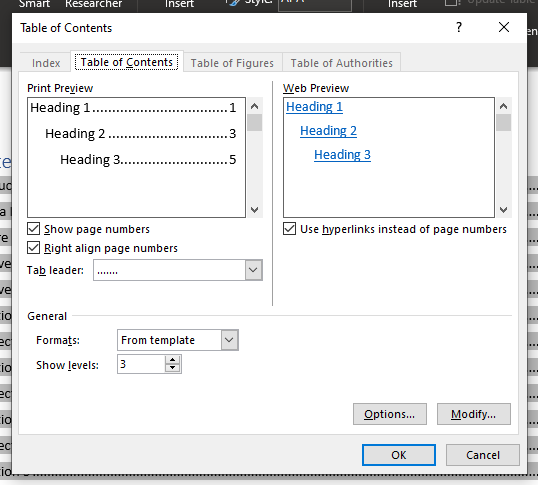


Here is what the brief looks like right now.Īs you can see there are a great many headings we can work with here to create a table of contents.ġ. I am merely using that sample brief so I do not have to use a real brief, which raises ethical questions. Our final Table of Contents will not look exactly the same as the Table of Contents in the sample brief, as that is not what this exercise is about. For our purposes I removed the Table of Contents from the sample brief and otherwise left the brief alone. For this project I am using Microsoft Word 2007, but the steps are the same for 20.įor this project I am using a sample brief found on the website for Ohio's 12th District Court of Appeals. This project assumes that you have already followed my previous tutorial and Created a Table of Authorities using the Mark Citation function in Microsoft Word. Our project today is creating a Table of Contents using Word's built in Table of Contents tool and Heading styles. This can and should change everything in the legal community, from making briefs more uniform and thus evening out the legal system, to giving legal writing professors a short guide they can show to students so the students don't have to spend hours searching the internet instead of practicing their new craft.
HOW TO CREATE TABLE OF CONTENTS IN WORD 365 HOW TO
Someone needs to create tutorials on actual brief construction and how to use Word to do this. So instead of having information, such as how to create a table of contents in Microsoft Word, available to law students so we can focus on honing our writing skills, law students have to search for tutorials on how to create a brief that lack the information they really need.Įvery legal tutorial on the internet is on the things learned in legal writing class: never use passive voice, make sure your headings tell the story, avoid legalese, and whatever you do avoid block quotes at all cost. There was a problem that I kept running into though, these tutorials either do not exist or are hidden within the walls of the large firms who create them (for fear that if they got out the other firms would gain a competitive advantage). Like most law school students I spent a lot of time searching through tutorials on how to put Microsoft Word to better use. We did spend some time on basic formatting (double spacing, underlining, using the spacebar key), but not nearly as much as I think would really benefit future lawyers. However no one, including my legal writing professor, spent much, if any, time on formatting. Writing was very high on the list and was a subject taught, at least in some regard, in every single law school class I took. Fortney | 1:14 PM in Employment LawĪs a fresh law school graduate I remember well what we did and did not learn in law school. Easily Create a Table of Contents for a legal brief with Microsoft Word


 0 kommentar(er)
0 kommentar(er)
